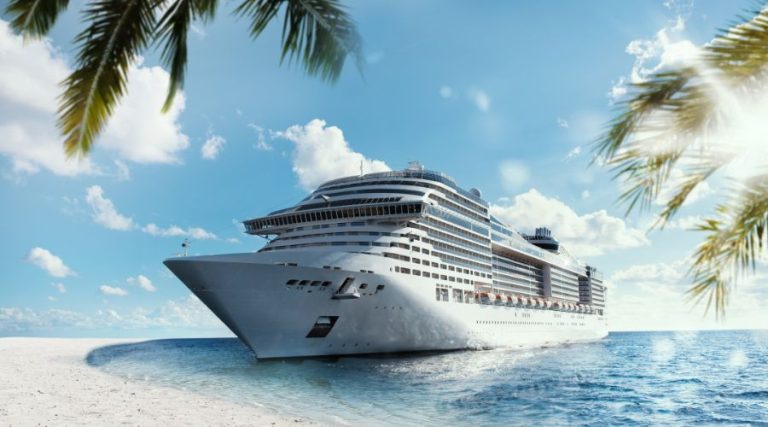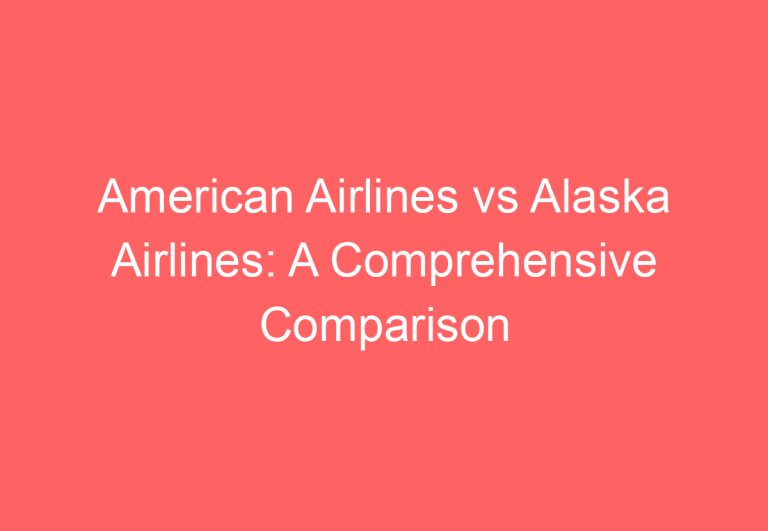Is Alaska an Island or a Peninsula? Explained
Alaska is known for its stunning natural beauty and unique geography. However, there is often confusion surrounding whether Alaska is an island or a peninsula. The answer to this question is not as straightforward as it may seem.

Alaska is the largest state in the United States and is located in the far northwestern corner of North America. It is bordered by Canada to the east and the Arctic Ocean, Bering Sea, and Pacific Ocean to the north, west, and south. While Alaska is not an island, it does have many islands within its borders, including the Aleutian Islands and the Kodiak Island Archipelago.
When it comes to the question of whether Alaska is a peninsula, the answer is more complicated. Alaska has a long, narrow strip of land called the Alaska Peninsula that extends from the mainland towards the southwest. However, the state also has a large number of islands that are connected to the mainland by land bridges, making it difficult to classify Alaska as strictly a peninsula.
Geographical Classification

Alaska is a unique state in the United States, and its geography is equally unique. There is often confusion about whether Alaska is an island or a peninsula, but the answer is not as straightforward as one might think. In this section, we will explore Alaska’s connection to the mainland and the Alaska Peninsula and Aleutian Islands.
Alaska’s Connection to the Mainland
Alaska is the largest state in the United States by area and is located in the far northwestern corner of North America. It is connected to the rest of the continent through Canada and is not separated from the mainland by any significant body of water. Therefore, Alaska is not an island but rather a part of the North American continent.
The Alaska Peninsula and Aleutian Islands
The Alaska Peninsula is a long, narrow strip of land that extends approximately 800 km into the Pacific Ocean. It is bounded by the Pacific Ocean to the south and east and by Bristol Bay and the Bering Sea to the north and west. The Aleutian Islands are a chain of volcanic islands that stretch westward from the Alaska Peninsula towards Russia for about 1,200 km. The islands are separated from the mainland by the Bering Sea and the Aleutian Trench.
The Alaska Peninsula and Aleutian Islands are not considered part of the mainland, but they are not considered islands either. Instead, they are classified as a peninsula and an archipelago, respectively. The Aleutian Islands are the westernmost part of the United States and are known for their rugged coastline, volcanic activity, and unique wildlife.
In conclusion, Alaska is not an island but rather a part of the North American continent. The Alaska Peninsula and Aleutian Islands are not considered part of the mainland but are classified as a peninsula and an archipelago, respectively. Alaska’s unique geography, which includes tundra, permafrost, mountains, forests, lakes, and national parks, makes it a fascinating destination for nature lovers and adventure seekers alike.
Historical and Cultural Context

Indigenous Peoples and the Aleut Influence
Alaska has been inhabited by Indigenous peoples for thousands of years. The Aleut people, also known as Unangan, have lived in the Aleutian Islands and the western part of the Alaska Peninsula for over 10,000 years. They are known for their unique culture, language, and art, which includes intricately carved ivory and wood pieces.
The Indigenous peoples of Alaska have a deep connection with the land and the sea, and their traditional way of life has been shaped by the harsh Arctic climate. They have a rich history of hunting and fishing, and they have developed unique techniques to survive in the extreme conditions of Alaska.
Russian Exploration and American Acquisition
In the late 1700s, Russian explorers arrived in Alaska and established a fur trade with the Indigenous peoples. They built settlements along the coast and in the Aleutian Islands, and they also established the first permanent settlement in Alaska, which is now known as Sitka.
In 1867, the United States purchased Alaska from Russia for $7.2 million. At the time, many Americans thought the purchase was a mistake, and they referred to Alaska as “Seward’s Folly” after the Secretary of State who negotiated the deal. However, the discovery of gold in the late 1800s and early 1900s brought a wave of settlers to Alaska, and the territory became a state in 1959.
Today, Alaska is known for its stunning natural beauty, including its glaciers, fjords, and mountains. It is also home to a diverse population that includes Indigenous peoples, settlers, and immigrants from around the world. Alaska is the northernmost state in the United States and is located on the western coast of North America. It shares a border with Canada to the east and is separated from Russia by the Bering Strait to the west.
Despite its remote location and harsh climate, Alaska is a popular destination for tourists who come to experience its unique culture, wildlife, and natural wonders. The state is also home to a thriving oil and gas industry, which has been a source of controversy due to concerns about the impact of drilling on the environment and Indigenous peoples’ way of life.
Frequently Asked Questions

What geographical feature is Alaska classified as?
Alaska is classified as a peninsula, not an island. It is the largest peninsula in the Western Hemisphere and the third largest in the world. It is connected to the North American continent by a narrow strip of land known as the Alaska Peninsula.
What is the name of the peninsula that constitutes a significant portion of Alaska?
The Alaska Peninsula is the name of the peninsula that constitutes a significant portion of Alaska. It extends from the mainland of Alaska towards the southwest and is approximately 500 miles long.
How does the Alaska Peninsula connect to the mainland?
The Alaska Peninsula connects to the mainland of Alaska by a narrow strip of land known as the Alaska Peninsula. This strip of land is approximately 35 miles wide at its narrowest point and is known as the “Alaska Land Bridge.”
What differentiates the Alaska Peninsula from an island?
The Alaska Peninsula is differentiated from an island by the fact that it is connected to the mainland by the Alaska Land Bridge. An island is a piece of land that is completely surrounded by water and is not connected to any other landmass.
Why is Alaska sometimes mistaken for an island?
Alaska is sometimes mistaken for an island because it is located in the northernmost part of the Pacific Ocean and is surrounded by water on three sides. Also, many maps of Alaska do not show the Alaska Land Bridge, which can give the impression that it is an island.
What factors contribute to the perception of Alaska as a peninsula?
The factors that contribute to the perception of Alaska as a peninsula include its connection to the North American continent via the Alaska Land Bridge, its size, and the fact that it is classified as a peninsula by geographers and cartographers. Additionally, the name “Alaska Peninsula” reinforces the idea that it is a peninsula rather than an island.






